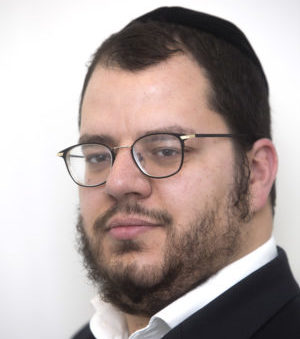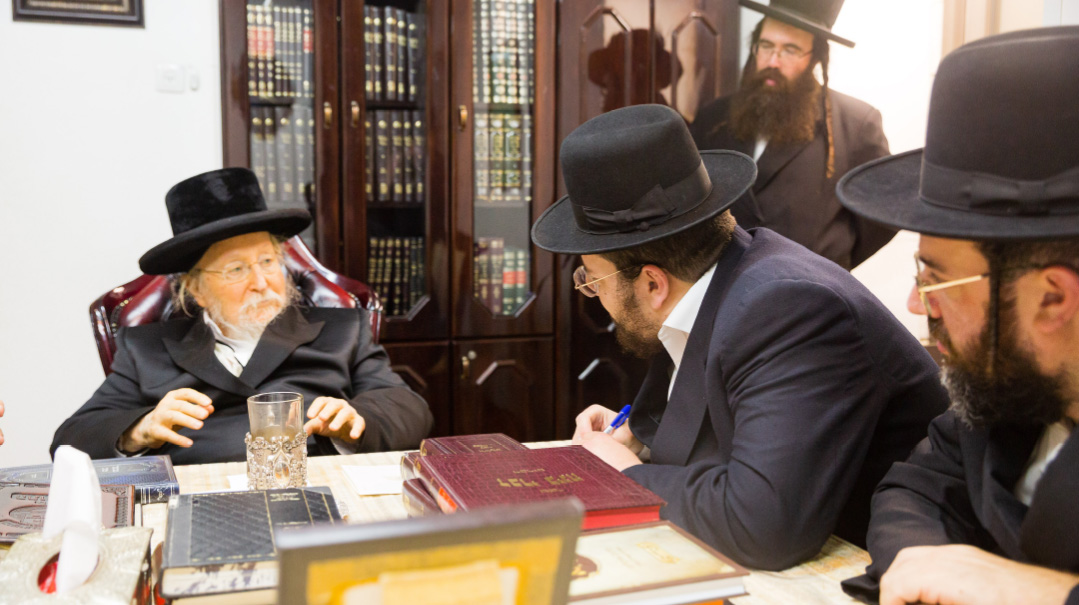Timeless Truths

The Biala-Lugano Rebbe shares timeless wisdom for a new generation

Photos: Elchanan Kotler, Moshe Goldstein, Mishpacha archives
I
t’s not every day that we merit to be received by the elder rebbe of the generation, and so we straighten our gartels, gather our wits, and walk into the room on Jerusalem’s Rechov Yaakovson, whose walls have heard so much pain yet have absorbed so much wisdom.
The first thing to strike us are the very wise, penetrating eyes. More than 90 years of hasmadah, of a life of toil in Torah that began as a child on the run from the Nazis, have not dimmed the Biala Rebbe’s freshness and sharpness. A model of patience, kindness, consistency, and discipline, mechaber of over 30 seforim, and elder member of the Moetzes Gedolei HaTorah, Rav Betzalel Simcha Menachem Bentzion Rabinowicz —Rebbe Bentzion — is known as the Biala-Lugano Rebbe after the Swiss city whose community he led before returning to Eretz Yisrael with the passing of his father, the Chelkas Yehoshua of Biala, when he was chosen to lead the chassidus.
If we ever wanted an example of a place where ruchniyus prevails over gashmiyus in a tangible way, we got it the minute we entered the Biala Rebbe’s room. It’s hard to ignore the physical fatigue of this elderly rebbe after hours of receiving chassidim for brachos and eitzos in advance of the new year – but it’s also impossible not to notice that any external tiredness is cancelled out by an intense internal vibrancy. The Rebbe’s Torah fortress has lots of cracks, but the kind that let the Torah seep to the outside.
This was clearly evident in the sharp, articulate, clear, and supportive answers he gives to all those who seek his support and wisdom – chassidim but so many others from all walks of life, even businessmen in search of financial insight.
And that’s why, for the past half a century or more, he’s been an address for thousands of people in need of advice, guidance, and direction – always dispensed with his calm, European-influenced demeanor, laced with decades of intense Torah study, together with his acute understanding of human nature and the complexities and challenges specific to this generation.

One of the big surprises of the chassidic world might be the story of Biala chassidus. Anyone who knows some modern chassidic history and walks through the main headquarters on Yaakovson Street, visits the yeshivah campuses in Bnei Brak and Elad, or pops into any one of the 15 shtiblach around the country, will surely wonder how all of this came about.
In order to understand, we need to first visit another, much older, beis medrash on the corner of Yosef ben Mattisyahu Street in Geula. In this tiny beis medrash — just a few square meters in size, with one central table in the middle and a few benches on the sides – the post-Holocaust seeds were planted. Less than 70 years ago, this small room contained pretty much the entire chassidus. There were times when there wasn’t even a minyan. But there was always a fire.
The entire yishuv in Jerusalem knew of the dynamic personality, with the weak body but giant spirit, whose avodas Hashem had become renowned all over – Rav Yechiel Yehoshua Rabinowicz, the holy Rebbe of Biala zy”a, known as the Chelkas Yehoshua for the sefer he wrote, and the father of the Biala-Lugano Rebbe. Many would come to learn from the ways of this holy tzaddik, who would spend most of the day in tallis and tefillin, and was known for his intense, hours-long prayers and especially careful recitation of Krias Shema. (He would often tell those who came for a brachah to be extra careful in reciting the Shema.) The Beis Yisrael of Gur, his next-door neighbor, would open his window on Friday night to hear the Biala Rebbe recite Kiddush. The Brisker Rav would send his talmidim to see the Krias Shema of the Biala Rebbe, telling them, “Look how a Yid takes upon himself Ol malchus Shamayim.”
Oops! We could not locate your form.







